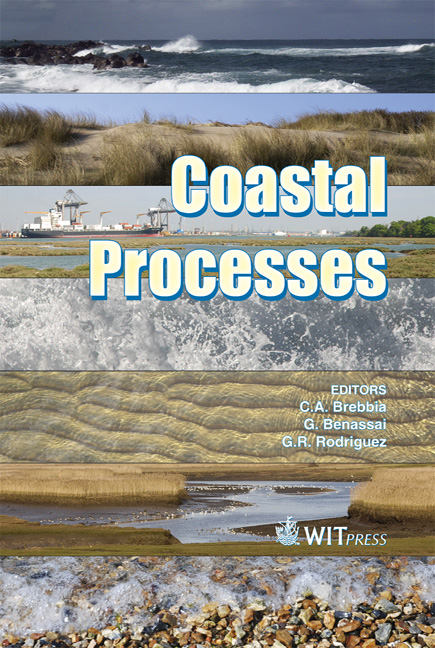Experimental Study Of Multi-functional Artificial Reef Parameters
Price
Free (open access)
Transaction
Volume
126
Pages
9
Page Range
139 - 147
Published
2009
Size
943 kb
Paper DOI
10.2495/CP090131
Copyright
WIT Press
Author(s)
M. ten Voorde, J. S. Antunes do Carmo, M. G. Neves & A. Mendonça
Abstract
Portugal is one of many countries in the world to suffer from coastal erosion. Conventional ways of protecting a coastline appear to entail some disadvantages. An innovative and interesting way of protecting a local coastal zone by means of multi-functional artificial reefs avoids some of them. A multi-functional artificial reef (MFAR) is a submerged breakwater which protects the local coastline and may also enhance the surfing possibilities and the environmental value of the local area. The structure has several positive sideeffects: first, it provides an unimpaired visual amenity; second, it offers tourist and economic benefits by improving the surfing. A 2D physical study is under way at LNEC to investigate the relations between the breaker type and the submergence and the length of a MFAR. Two different geometries were tested for different incident wave characteristics and different water depths. This paper presents the main characteristics of the physical experiments in progress in a wave flume to analyze the influence of the submergence and the length of a MFAR on the wave breaking type. The main preliminary conclusions are that the length of the reef doesn’t have much influence on the breaker type and that the shorter the slope of the reef the more the wave breaks towards the crest. Keywords: coastal protection, multi-functional artificial reefs, physical experiments, breaker type.
Keywords
coastal protection, multi-functional artificial reefs, physical experiments, breaker type





